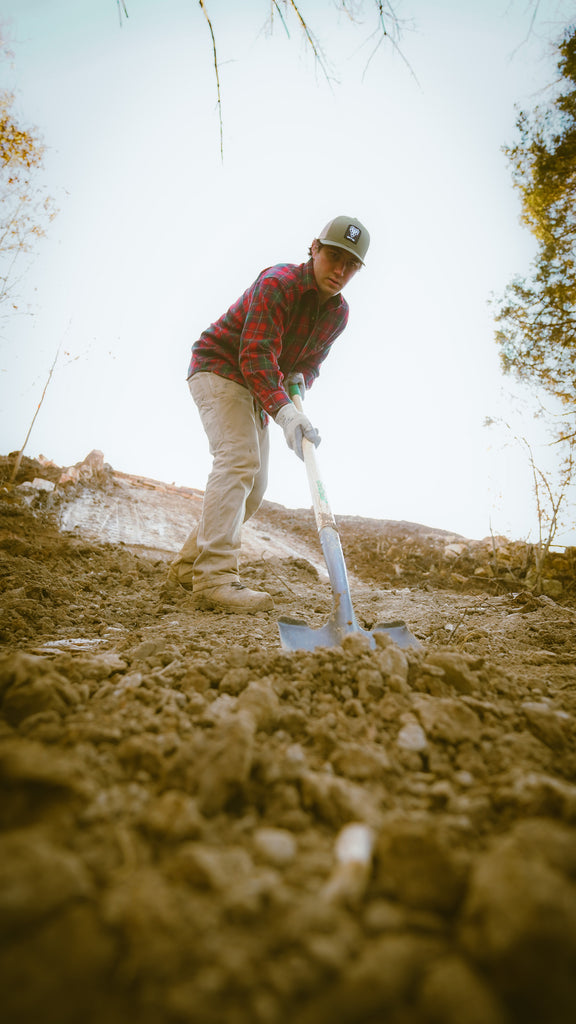Trail builder and mountain biker Cody Wilkins takes a break from a bike park project to talk about how mountain bikers are saving towns and what we can do to make mountain biking for everyone.

Cody Wilkins on the job.
Cody Wilkins is in the middle of building a bike skills park at Woodward Tahoe, at the base of Boreal ski area atop California’s Donner Summit. This is his job: He’s the project coordinator and head of development for Sensus RAD Trails, a trail building non-profit organization started by pro mountain biker Cam Zink. It’s a hot day in early summer and Wilkins needs to take a break anyway. So, he chats for a few minutes. About how he found mountain biking from an early age, why he still loves it, and why everyone deserves a chance to ride a perfect flow trail. Wilkins, a Flylow-sponsored mountain biker and skier, now calls Bellingham, Washington, home. These are his words.
My brother and I grew up in upstate New York in a super rural part of the state. School was far away, and team sports weren’t easy to get to. Biking and skiing were the best outlets we had for getting outside. There weren’t a ton of paved roads where we lived, so we started mountain biking pretty young, around seven or eight. My dad was a contractor and had a tractor, so we built jumps in the backyard. Back then, if you wanted to ride something like you saw in a bike movie, you had to build it.
One of the earliest bike parks was at Plattekill ski area, in New York. They didn’t have a dig crew. So, for every day you dug, you got a lift pass you could use later in the year. Our dad would drop us off at the ski hill, and we’d dig with these old guys. Then our lift tickets for the year were covered.
Building trails as your job is awesome. You see these cities that want trails because it gets people outside. It’s a positive economic force. We’re creating environmentalists, whether they like it or not. These towns will reach out and say, ‘Hey, we’re considering building bike trails.’ They want a professional to help them build the trails right. I’ll end up talking to the city council. A lot of it is introducing these people who don’t ride bikes to what it actually entails. They might not understand what a berm is or what it takes to get a trail built. It’s pretty foreign, but it’s easy to convince people that it’s a good idea to build trails.
Look at British Columbia. So much of their tourism is climbing, skiing, biking. They’ve kept tabs on it. Some of these cities are seeing millions of dollars a year in income from outdoor recreation. There are towns like Bentonville, Arkansas, and private ski areas with bike parks all over the country. You go to these towns and the brewery is packed and there are mountain bikes out front. IMBA has done studies on mountain biking spending. Bikers can spend $50 to $250 a day on food, lodging, a new tire at the local bike shop. When the city council hears that, their ears perk up. With that kind of spending, a trail could pay for itself in a year.

